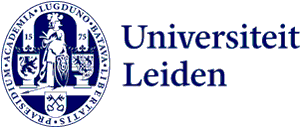Podcast
Audio podcasts or audio recordings have a broad range of opportunities in education. Podcasts can be used to transfer knowledge (audio lectures), record interviews, record instructions for a field trip or to make a short radio documentary on location. Podcasts are a flexible medium, the small file size makes them easy downloadable and students can listen to them anywhere, anytime, even while doing other things.
Podcast 'Enkeltje Wetenschap', produced by the Center for Innovation, Leiden University.
When to use this format? When you:
- Have a concept or story to explain which does not depend on visuals.
- Want to record yourself in an easy and flexible way.
- Have several stories or interviews on which you can create a podcast series.
- Have a group of students (abroad) who do not have access to a stable internet connection.
- Would like to do a creative assignment with your students (studentgenerated podcasts).
Keep in mind that you:
- Need to have a highquality microphone or headset that you can plug into your computer for good sound quality.
- Are depending on voice/ sound only. Make sure your text is engaging and you make use of visual language in your text, you can achieve this by making use of examples and stories.
- Should limit a lecture-style podcast to 10-15 minutes, research shows this is the maximum recommended length for educational podcasts. Nevertheless in-depth interviews or on-location podcasts can be interesting for 30 or 45 minutes when you have interesting speakers.
- Use the flexibility of the medium. Consider recording on location to create engaging content.
Support
You can record a podcast by yourself. You can also contact your video coordinator if you need more support.
Sources
Salmon, G., & Edirisingha, P. (2009) Podcasting for learning in universities. 2nd edn. Maidenhead: Open University Press, McGraw-Hill Education. Routledge.
Cosimini, M. J. et al. (2017) Podcasting in Medical Education: How Long Should an Educational Podcast Be?, Journal of Graduate Medical Education, 9(3), pp. 388–389.
